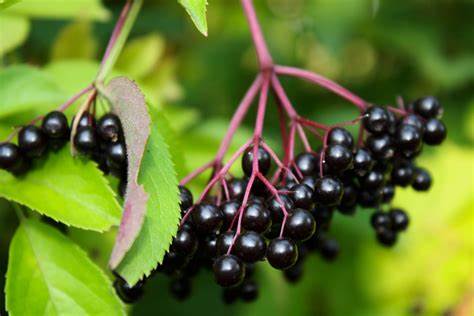Grapefruit is a juicy, tangy citrus fruit that is rich in nutrients and low in calories. It is a great source of vitamin C, fiber, and antioxidants that can boost your immune system, improve digestion, and protect against chronic diseases. However, grapefruit can also interact with certain medications, making them less effective or causing harmful side effects. This is because grapefruit contains compounds that can interfere with the enzymes responsible for breaking down drugs in your body. As a result, it is important to be aware of any potential interactions between grapefruit and your medications. In this post, we’ll explore the nutritional benefits of grapefruit, as well as its potential interactions with medications and what you can do to minimize any risks.
Shop Amazon and Save on Grapefruit
1. Introduction to the nutritional benefits of grapefruit
Grapefruit, with its vibrant hue and tangy flavor, is not just a delicious citrus fruit but also a nutritional powerhouse. Packed with essential vitamins, minerals, and antioxidants, grapefruit offers a range of health benefits that make it a valuable addition to any diet.
One of the standout features of grapefruit is its high vitamin C content. Just one serving of this juicy fruit can provide a significant portion of your recommended daily intake of vitamin C, which plays a crucial role in supporting a healthy immune system, collagen production, and overall well-being.
In addition to vitamin C, grapefruit is also a good source of other vitamins such as vitamin A, potassium, and vitamin B6. These nutrients contribute to maintaining healthy skin, promoting proper nerve function, regulating blood pressure, and supporting the body’s metabolic processes.
Grapefruit is also rich in antioxidants, particularly flavonoids like naringin and lycopene. These compounds have been associated with various health benefits, including reducing inflammation, protecting against cellular damage, and potentially lowering the risk of chronic diseases such as heart disease and certain types of cancer.
Moreover, grapefruit is a low-calorie and fiber-rich fruit, making it an excellent choice for individuals looking to manage their weight or improve their digestive health. The fiber in grapefruit can aid in digestion, promote feelings of fullness, and support healthy blood sugar levels.
While grapefruit offers an array of nutritional benefits, it is important to be aware of potential interactions with certain medications. Grapefruit contains compounds that can interfere with the enzymes responsible for metabolizing certain drugs, leading to increased levels of the medication in the bloodstream. This can potentially cause adverse effects or alter the intended therapeutic outcomes.
In conclusion, grapefruit is not only a refreshing and tasty fruit but also a nutritional powerhouse. Its abundance of vitamins, minerals, antioxidants, and fiber make it a valuable addition to a balanced diet. However, if you are taking medications, it is crucial to consult with your healthcare provider regarding any potential interactions between grapefruit and your medications to ensure your safety and well-being.
2. Exploring the rich vitamin and mineral content of grapefruit
Grapefruit, with its tangy and refreshing flavor, is not only a delicious fruit but also a nutritional powerhouse. Packed with essential vitamins and minerals, grapefruit offers a wide range of health benefits.
First and foremost, grapefruit is a great source of vitamin C, a powerful antioxidant that helps boost the immune system and promotes healthy skin. Just one serving of grapefruit can provide a significant amount of your daily vitamin C requirement, helping to ward off colds and other illnesses.
In addition to vitamin C, grapefruit contains other important vitamins such as vitamin A, which is essential for maintaining healthy vision and promoting cell growth, and vitamin B6, which plays a crucial role in brain development and function.
Minerals are also abundant in grapefruit. Potassium, for instance, helps regulate blood pressure and maintain proper heart function. It also aids in muscle contractions and supports overall cardiovascular health. Grapefruit also contains calcium, magnesium, and folate, all of which are necessary for maintaining strong bones, supporting nerve function, and promoting healthy blood cell production.
One unique component of grapefruit is its high content of flavonoids, which are plant compounds known for their antioxidant and anti-inflammatory properties. These flavonoids, such as naringenin, have been linked to potential health benefits like reducing the risk of certain cancers, improving heart health, and supporting weight management.
While grapefruit is undoubtedly a nutritional powerhouse, it is important to note that it can interact with certain medications. Grapefruit contains compounds that can interfere with the enzymes responsible for metabolizing certain drugs, leading to higher levels of the medication in the bloodstream. This can potentially cause adverse effects or alter the intended effectiveness of the medication. It is always recommended to consult with your healthcare provider or pharmacist about potential interactions between grapefruit and any medications you may be taking.
Incorporating grapefruit into your diet can be a delicious and nutritious way to enhance your overall well-being. Just be mindful of any potential medication interactions and enjoy the numerous health benefits this citrus fruit has to offer.
3. The role of antioxidants in grapefruit and their health benefits
Shop Amazon and Save on Grapefruit
Grapefruit is not only a delicious and refreshing fruit, but it is also a nutritional powerhouse packed with antioxidants. Antioxidants are compounds that help protect our cells from damage caused by harmful molecules called free radicals. These free radicals can lead to chronic diseases and contribute to the aging process. By consuming foods rich in antioxidants, like grapefruit, we can help combat these effects and promote overall health.
One of the key antioxidants found in grapefruit is vitamin C. This powerful nutrient plays a vital role in supporting our immune system, as well as promoting healthy skin and collagen production. Vitamin C also acts as a natural antioxidant, helping to neutralize free radicals and reduce oxidative stress in the body.
Another antioxidant found in grapefruit is lycopene, which gives the fruit its vibrant pink or red color. Lycopene has been linked to numerous health benefits, including reducing the risk of certain types of cancer, protecting against heart disease, and promoting eye health. It is also known for its anti-inflammatory properties, which can help reduce inflammation in the body and support overall well-being.
In addition to vitamin C and lycopene, grapefruit contains other antioxidants such as beta-carotene, flavonoids, and vitamin A. These compounds contribute to the fruit’s potential health benefits, including improved digestion, enhanced metabolism, and reduced risk of chronic diseases like diabetes and obesity.
While grapefruit is undoubtedly a nutritional powerhouse, it is important to note that it can also interact with certain medications. Grapefruit contains compounds that can interfere with the enzymes responsible for metabolizing many medications, leading to increased levels of the drug in the bloodstream. This can potentially cause adverse effects or alter the intended therapeutic effects of the medication. Therefore, it is crucial to consult with a healthcare professional before consuming grapefruit or its juice if you are taking any medications.
In conclusion, grapefruit is not only a tasty fruit but also a rich source of antioxidants that offer numerous health benefits. From boosting the immune system to protecting against chronic diseases, grapefruit can be a valuable addition to a balanced and nutritious diet. However, it is essential to be aware of its potential interactions with medications and seek professional advice if necessary. Incorporate grapefruit into your diet wisely to harness its nutritional power and reap its health benefits.
4. Grapefruit’s impact on weight management and digestion
Grapefruit, often hailed as a nutritional powerhouse, offers numerous health benefits beyond its tangy and refreshing taste. Not only is it low in calories and high in fiber, making it a great addition to a weight management plan, but it also contains essential nutrients that support optimal digestion.
When it comes to weight management, grapefruit can be a game-changer. Its high fiber content helps promote feelings of fullness, reducing the chances of overeating. Additionally, grapefruit is known for its metabolism-boosting properties, which can aid in weight loss efforts. Studies have shown that consuming grapefruit regularly can increase fat-burning enzymes and improve insulin sensitivity, making it an excellent choice for those looking to shed some pounds.
In addition to its benefits for weight management, grapefruit plays a vital role in supporting healthy digestion. The fruit is rich in enzymes that assist in breaking down proteins and improving overall digestion. Its high water content also helps keep the digestive system hydrated and functioning optimally. Moreover, grapefruit is a natural source of dietary fiber, which aids in promoting regular bowel movements and preventing constipation.
However, it’s worth noting that grapefruit, despite its many health benefits, can interact with certain medications. Compounds found in grapefruit can inhibit enzymes in the liver, potentially affecting the metabolism of various medications. This can lead to higher levels of certain drugs in the bloodstream, resulting in adverse effects or reduced effectiveness. If you’re taking any medications, it’s crucial to consult with your healthcare provider to determine whether grapefruit consumption is safe for you.
Incorporating grapefruit into your diet can be a delicious and nutritious way to support weight management and improve digestion. Its unique combination of vitamins, minerals, and fiber make it an excellent choice for those seeking a healthy lifestyle. Just remember to be mindful of potential medication interactions and seek professional advice if needed. So go ahead, enjoy a juicy grapefruit and reap the benefits it has to offer for your overall well-being.
5. Potential medication interactions with grapefruit
Shop Amazon and Save on Grapefruit
Grapefruit, with its tangy and refreshing taste, is not only a delicious fruit but also a nutritional powerhouse. Packed with essential vitamins, minerals, and antioxidants, it offers numerous health benefits. However, it is important to be aware of potential medication interactions with grapefruit, as it can affect the way certain medications work in our bodies.
Grapefruit contains compounds called furanocoumarins, which can interfere with the enzymes responsible for breaking down medications in our digestive system. This interference can lead to increased levels of certain medications in the bloodstream, potentially causing adverse effects or reducing the effectiveness of the medication.
Several classes of medications are known to interact with grapefruit, including certain cholesterol-lowering statins, blood pressure medications, antidepressants, and immunosuppressants. It is advisable to consult with your healthcare provider or pharmacist to determine if any of the medications you are taking may interact with grapefruit.
It’s important to note that not all medications interact with grapefruit, and the severity of the interaction can vary depending on factors such as the specific medication, dosage, and individual factors. However, it is always better to err on the side of caution and seek professional advice.
If you are taking medications that may interact with grapefruit, your healthcare provider may recommend avoiding grapefruit or grapefruit juice altogether. Alternatively, they may adjust your medication dosage or suggest alternative medications that do not interact with grapefruit.
Understanding these potential medication interactions with grapefruit can help you make informed decisions about your diet and medication regimen, ensuring your health and well-being. Remember, when it comes to your health, it’s always better to be safe than sorry.
6. Understanding how grapefruit affects drug metabolism
Grapefruit is not only a delicious and refreshing fruit but also a nutritional powerhouse that is packed with vitamins and minerals. However, what many people may not be aware of is that grapefruit can interact with certain medications and affect their metabolism in the body.
The main culprit behind these interactions is a compound found in grapefruit called furanocoumarins. This compound inhibits the activity of an enzyme called cytochrome P450 3A4 (CYP3A4) in the intestines. This enzyme is responsible for breaking down many medications, allowing them to be absorbed into the bloodstream and exert their therapeutic effects.
When grapefruit juice or grapefruit is consumed, the furanocoumarins can bind to and inhibit CYP3A4, leading to reduced metabolism of certain medications. As a result, the levels of these medications can increase in the body, potentially leading to higher-than-intended drug concentrations and an increased risk of adverse effects.
It is important to note that not all medications are affected by grapefruit. However, some of the commonly prescribed drugs that can interact with grapefruit include certain statins for cholesterol management, calcium channel blockers for blood pressure control, immunosuppressants used after organ transplantation, and some psychiatric medications.
To ensure the safe and effective use of medications, it is crucial to understand the potential interactions with grapefruit. If you are taking any of the aforementioned medications or have any concerns, it is advisable to consult with your healthcare provider. They can provide personalized advice and guidance based on your specific medication regimen and health condition.
In conclusion, while grapefruit offers numerous health benefits, it is important to be aware of its potential interactions with certain medications. Understanding how grapefruit affects drug metabolism can help individuals make informed decisions about their diet and medication use, ensuring optimal therapeutic outcomes and minimizing the risk of adverse effects.
7. Common medications that can interact with grapefruit
Grapefruit is undeniably a nutritional powerhouse, packed with essential vitamins and minerals that can benefit your overall health. However, it’s important to be aware of potential medication interactions that can occur when consuming grapefruit. Although grapefruit is a delicious and healthy fruit, certain compounds found in grapefruit can interfere with the way your body metabolizes medications, leading to potentially dangerous consequences.
Several classes of medications are known to interact with grapefruit, including statins (cholesterol-lowering drugs), calcium channel blockers (used to treat high blood pressure), benzodiazepines (anti-anxiety medications), and certain immunosuppressants (used in organ transplant patients). These medications, among others, can be affected by grapefruit, leading to increased levels of the drug in the bloodstream.
The interaction between grapefruit and medications occurs due to the presence of certain compounds called furanocoumarins, which inhibit the activity of an enzyme called CYP3A4 in the liver. This enzyme is responsible for breaking down many medications, so when its activity is inhibited, the drug levels in your body can rise to potentially harmful levels.
It’s crucial to understand that not all medications within these classes will interact with grapefruit, and the severity of the interaction can vary depending on factors such as the specific drug, the dosage, and individual variations in metabolism. However, it’s always recommended to consult with your healthcare provider or pharmacist if you regularly consume grapefruit or grapefruit juice and are prescribed any medications.
Being aware of potential interactions can help you make informed decisions about your health. If you’re unsure about whether a specific medication you’re taking can interact with grapefruit, it’s best to consult with your healthcare provider. They can provide personalized advice based on your medical history and current medications, ensuring your safety and optimizing your treatment outcomes. Remember, knowledge is power when it comes to managing your health effectively.
8. Safety precautions and guidelines for consuming grapefruit with medications
Shop Amazon and Save on Grapefruit
When it comes to enjoying grapefruit while taking medications, it’s important to be aware of potential interactions and take necessary safety precautions. Grapefruit contains compounds that can interfere with the enzymes responsible for breaking down certain medications in the body. This can lead to higher levels of the medication in the bloodstream, potentially causing adverse effects or altering the intended therapeutic outcome.
If you’re taking any prescription or over-the-counter medications, it’s crucial to consult with your healthcare provider or pharmacist to understand if grapefruit or grapefruit juice could interact with your specific medications. They will have the most comprehensive knowledge of potential interactions and can provide personalized guidance.
To ensure your safety, here are some general guidelines to consider:
1. Read medication labels: Check if your medications have warnings or instructions regarding grapefruit consumption. Some medications may explicitly mention avoiding grapefruit or grapefruit juice.
2. Seek professional advice: Consult your healthcare provider or pharmacist to discuss any potential interactions between grapefruit and your medications. They can provide specific recommendations based on your health condition and prescribed medications.
3. Be cautious with all forms of grapefruit: Interactions have been observed with both fresh grapefruit and grapefruit juice. It’s important to be mindful of all grapefruit products, including extracts and supplements.
4. Consider alternatives: If grapefruit interactions are a concern, discuss with your healthcare provider if there are alternative medications or treatment options that do not have similar interactions.
Remember, everyone’s situation is unique, and the severity of interactions can vary. By being proactive and seeking professional guidance, you can ensure the safe consumption of grapefruit while taking medications and minimize any potential risks.
9. Alternative options for individuals with medication restrictions
For individuals who have medication restrictions or concerns about potential interactions, there are still alternative options to enjoy the many benefits of grapefruit. While it is important to consult with a healthcare professional before making any changes to your medication regimen, there are a few approaches you can consider.
Firstly, you can opt for other citrus fruits that do not have the same potential for medication interactions as grapefruit. Oranges, lemons, and limes are all excellent choices that offer similar nutritional benefits without the risk of interfering with medications.
Another alternative is to explore grapefruit products that have been processed to remove or reduce the compounds responsible for the interactions. These products, such as grapefruit juice without furanocoumarins, can be found in some grocery stores or specialty shops. However, it is crucial to read labels carefully and verify with the manufacturer that the product is indeed free from the problematic compounds.
Additionally, incorporating other nutrient-rich foods into your diet can help compensate for any potential loss in nutrition from avoiding grapefruit. Foods like berries, leafy greens, cruciferous vegetables, and whole grains offer a wide range of vitamins, minerals, and antioxidants that contribute to overall health and well-being.
Remember, always consult with your healthcare professional or pharmacist to discuss any concerns or questions you may have about grapefruit interactions with your medications. They will be able to offer personalized guidance based on your specific health needs and medication profile.
10. Conclusion and incorporating grapefruit into a balanced and healthy diet
In conclusion, grapefruit is not only a delicious and refreshing fruit but also a nutritional powerhouse that offers numerous health benefits. From its high vitamin C content to its rich array of antioxidants, grapefruit can support a strong immune system, promote healthy skin, and contribute to overall well-being.
However, it is important to be aware of potential medication interactions with grapefruit. Some compounds found in grapefruit can interfere with the enzymes responsible for metabolizing certain medications, leading to potentially dangerous side effects. It is always wise to consult with a healthcare professional or pharmacist before incorporating grapefruit into your diet if you are taking any medications.
That being said, for those who are not on medications that interact with grapefruit, incorporating this citrus fruit into a balanced and healthy diet can be a great idea. Grapefruit can be enjoyed in many ways, from simply eating it as a snack to adding it to salads, smoothies, or even using its juice in marinades or dressings. Its tangy and slightly bitter taste adds a refreshing twist to any dish.
Remember to choose ripe grapefruits that are firm, heavy for their size, and have a vibrant color. This ensures that you are getting the best flavor and nutritional value from the fruit. Additionally, if you prefer a sweeter taste, you can try sprinkling a bit of honey or a sprinkle of sugar on top of the grapefruit segments.
Incorporating grapefruit into your diet is a simple and delicious way to reap its nutritional benefits. So why not give this citrus fruit a try and experience its unique flavor and health-promoting properties for yourself? Whether you enjoy it as a standalone snack or incorporate it into your favorite recipes, grapefruit can be a delightful addition to a balanced and healthy lifestyle.
We hope you found our blog post on grapefruit informative and helpful. Grapefruit is not only a delicious fruit but also a nutritional powerhouse with numerous health benefits. However, it’s important to be aware of potential medication interactions due to the compounds found in grapefruit. By understanding these interactions and taking necessary precautions, you can enjoy the benefits of grapefruit while ensuring your medications work effectively. Incorporate this nutritious fruit into your diet wisely and maintain a healthy lifestyle. Remember, knowledge is key when it comes to optimizing your health and well-being.
Shop Amazon and Save on Grapefruit
——————————



